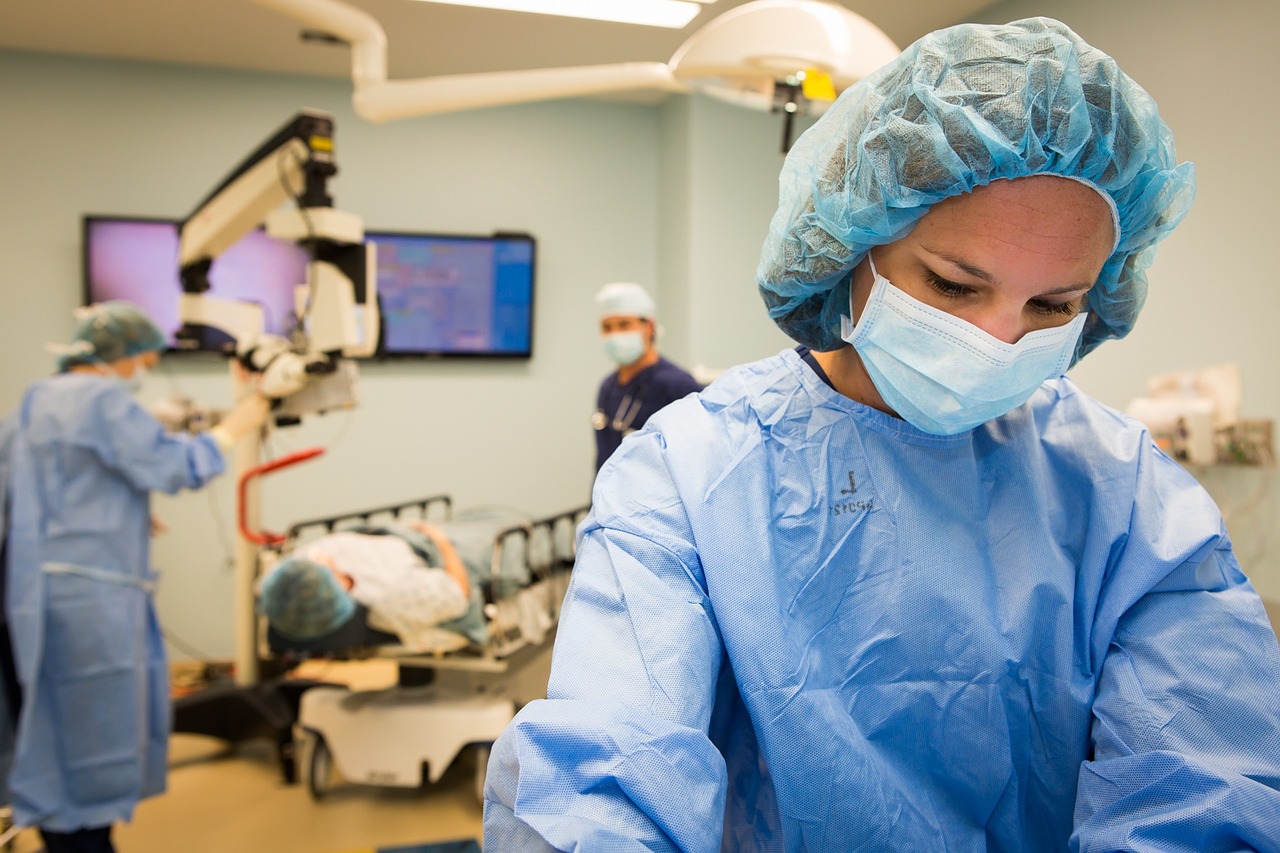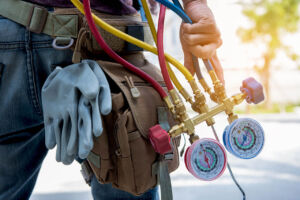Of the hundreds of unique job descriptions in the healthcare field, two of the most often confused are that of a CMA and a CNA. In this case, one letter makes a big difference. So, let’s take a closer look at these equally critical, yet different roles.
What’s the Difference Between a CNA and a CMA?
While a CNA course may be shorter in duration, the salary of a CNA is lower than that of a CMA, and CMAs have a more diverse set of tasks, room for advancement and an increase in longevity. For example, CMAs can choose clerical/desk jobs or work directly under the physician, administering blood tests or performing electrocardiograms. CMAs can even work their way up to a manager level with some experience. So, what exactly does a CNA and CMA do?
Certified Nursing Assistants (CNA)
CNAs are certified nurse’s assistants. They work in hospitals and nursing homes under the supervision of a nurse, assuming many of a nurse’s duties, such as:
- Helping patients bathe, dress, eat and use the toilet
- Assisting with therapeutic exercises, transportation, and recreational activities
- Taking vital signs
- Recording intake and output of food and fluid
- Making beds and caring for patients’ personal belongings
- Helping patients with mobility needs
- Skin care and bedsore prevention
- Providing emotional and psychosocial support
- Patient education
- End-of-life care
- Family support
CNAs are an integral part of their patients’ daily lives; patients rely on them for most day-to-day activities. In nursing and private home, they may care for fully dependent patients with severe physical or cognitive disorders.
Certified Medical Assistants (CMA)
CMAs, on the other hand, are certified medical assistants. Employed in hospitals, doctor’s offices, and clinics, they have both clinical and administrative responsibilities. Some duties, such as taking vital signs overlap, but CMAs rarely perform direct care. Instead, they work in office settings as patient guides and physician liaisons, bridging the gap between the exam room and the physician’s office.
Because certified nursing assistants are closely supervised, and they do for others what are considered ordinary daily activities that don’t require special skills, they receive less education. States set the training requirements, but it’s rarely more than 200 hours of blended classroom instruction and clinical rotations.
Certified medical assistants are better trained. A vocational school diploma or associate degree is important, and graduates must pass an exam to become certified. As allied health professionals, medical assistants are well-educated and fill a vital frontline role.
What Do Certified Medical Assistants Do?
Medical assistants manage a broad range of important clinical and clerical tasks in a medical office setting, helping doctors, nurses, and administrators deliver top-notch patient care. Job descriptions vary by setting, but responsibilities generally include:
Triaging Phone Calls
As the doctor’s representative, medical assistants respond to patient calls, using their clinical know-how to screen symptoms and prioritize which patients need immediate care.
Managing the Schedule
The front office handles routine scheduling in a doctor’s office, but medical assistants oversee the schedule, ensuring the right equipment and staff are available for each visit.
Rooming Patients
Medical assistants escort patients to exam rooms where they prepare them for exams. The goal is to complete the clerical and administrative tasks required for doctors to make the most of each visit.
You’ll update their drug and allergy lists, help them change their clothes if necessary and complete screenings for pain, mental health, and home safety concerns. If a urinalysis was ordered, you’ll collect and test a urine sample.
Taking Vital Signs
CMAs take a patient’s temperature, blood pressure, pulse, respiratory rate, and peripheral oxygen saturation before each visit. Accuracy is critical because the results help doctors diagnose illness and identify risk factors for chronic diseases.
Performing Diagnostic Tests
Diagnostic tests like EKGs were once done only in hospitals, but now they’re performed in office settings by CMAs. You’ll manage the equipment, do the tests, and document the results. In specialty practices, some medical assistants spend most of the day doing just diagnostics.
Assisting with Treatments and Minor Surgical Procedures
Part of a CMA’s role is to assist doctors and nurses with in-office surgical procedures and treatments, such as wound care. From setting up equipment to passing instruments, you’ll be the provider’s right hand.
Administering Medications
Medical assistants are trained to give intramuscular, subcutaneous, and intradermal injections under the supervision of licensed clinical providers. They can give vaccines, perform TB testing, and administer oral medications to stable, adult patients.
Phlebotomy
Vocational schools teach students the skills necessary to perform blood draws in an office environment. You learn to evaluate patients, select the right equipment, obtain the sample and process, or ship it per the laboratory’s specifications.
Infection Control
Medical environments can harbor germs, so sanitation is among a medical assistant’s most important responsibilities. You’ll sanitize surfaces and disinfect shared equipment between each visit, limiting the spread of potentially dangerous microorganisms.
Managing Referrals
One-third of all patients seen annually are referred to another physician for specialty care, but it’s not as easy as making an appointment. The process requires the exchange of information. CMAs use their clinical expertise to identify the necessary data and their clerical training to transfer sensitive documents securely.
Billing and Coding
Medical billing specialists handle most of the billing in healthcare settings, but CMAs play a remarkably important role. By ensuring that forms used for billing have the proper medical codes; short, alphanumeric sequences that describe everything from patient symptoms to disposable supplies; they guarantee that doctors get paid.
Correspondence
Communication is essential in healthcare, but doctors rarely have time to write letters or make personal phone calls. Routine correspondence whether by letter, e-mail or phone is handled by medical assistants.
Patient Education
CMAs can’t offer medical advice, but they can counsel patients based on doctors’ orders. Whether it’s explaining medication precautions or presurgical instructions, you’ll serve as a go-to resource for timely health information.
General Office Tasks
Having clinical skills doesn’t get medical assistants out of helping around the office. There’s always so much to do. From filing to billing to catching up with patients who are overdue for preventive services, CMAs fill their downtime by being team players.
What’s an Easy Way to Become a Medical Assistant?
You can become a medical assistant by getting a degree, but students are increasingly choosing the diploma option. Vocational school graduates qualify for the same jobs and certification opportunities as their college-educated peers but are work-ready in a fraction of the time, as little as nine months compared to two or more years.
Programs are intense but more lifestyle-friendly and just as thorough as degree programs. So, why take a detour when the straight path leads to success faster?
How Do Medical Assistants Become Certified?
Certification isn’t a requirement for medical assistants, but most employers expect it. The nation’s largest insurer, Medicare, now requires medical assistants to be certified to perform many essential tasks, so having proven, documented skills makes you a more valuable job applicant.
With few exceptions, you need a diploma or degree to become certified. Then you take a test from one of several credentialing agencies, and when you pass, you receive a certificate. Graduating from a medical assisting program doesn’t guarantee certification, but the curriculum is comprehensive and covers everything you need to know.
Final Thoughts
As the healthcare system expands, CMAs are in high demand. As they doctors and nurses become busier, CMAs start to take on additional responsibility. So, learn more about becoming a medical assistant at CyberTex and join a community that cares about their patients. Medical assisting is a rewarding career, and you get to help others in the process. It’s a win-win.
Want to Learn More?
Ready to learn more about becoming a medical assistant in Central Texas? The Medical Assistant Training Program at CyberTex Institute of Technology takes great care of you by providing hands-on training, practical experience and the support it takes to get started in a medical assisting career without spending years in school. You will learn the basics of both clinical and administrative skills, and prepare to work in physician’s offices, hospitals, and other medical facilities.
Contact us today to learn more about our Austin and Killeen campuses.





